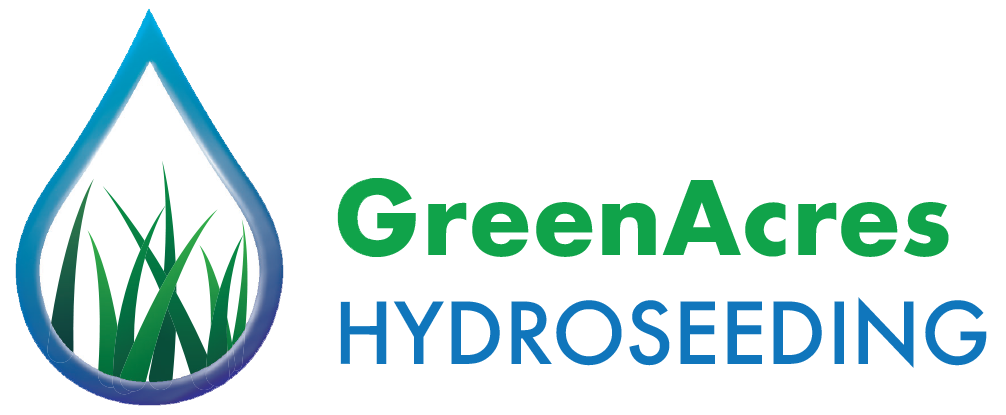Watering & Care Instructions for Your New Hydroseeded Lawn
Overspray Notice
Hydroseeding involves high-pressure equipment (70+ psi), which can sometimes overspray onto unintended surfaces. The good news—hydroseed is biodegradable and won’t stain. Any overspray can be rinsed away easily with light pressure. Just be sure not to wash seed off intended areas.
Key Points to Remember
Hydroseed is a live product that needs to stay moist. If it dries out, the seed will die.
Keep people and pets off the newly seeded area until the grass reaches three inches tall (except for necessary watering or sprinkler adjustments).
Sunny areas will dry out faster than shaded areas. Monitor and adjust watering accordingly.
Growth Timeline
Day 1
Let the hydroseed dry and set for 2–7 hours (until it looks chalky). Then, begin watering as outlined below.
Week 1
Hydroseed color will fade from green to tan/dirt color. Keep an eye on moisture levels and adjust watering as needed.
Week 2
You’ll see noticeable growth. Continue to keep seed moist, but don’t overwater.
Week 3
Grass growth should become more uniform. Bare spots often indicate watering inconsistencies—adjust your sprinkler coverage.
Week 4
Most of the seed will have germinated. Transition to deep watering (explained in Stage 3). Once the grass is three inches tall, it’s ready for its first mowing.
Sprinkler System Guidelines
Every yard and system is different. Test your sprinklers before hydroseeding to identify dry spots or pooling. Fix these to avoid dead patches.
Proper calibration ensures even coverage and healthier growth.
Watering Stages
Stage 1: Germination (0–2 inches)
Water at least four times daily during hot weather.
Adjust down for cool or rainy conditions.
Short, frequent watering is better than long, infrequent watering.
Keep mulch (seed mix) moist—never let it dry out.
Avoid water pooling.
Water during daylight hours, not at night.
Early evening watering can help maintain moisture overnight.
Typical watering times for sunny, hot days:
7AM, 11AM, 2PM, 5PM, 8PM
Sprinkler timing by type:
Rotating heads: 4–5 times/day, 7–10 minutes each
Pop-up heads: 4–5 times/day, 3–5 minutes each
Stage 2: 2–3 inches of new growth
Roots are developing but still delicate.
Gradually reduce watering frequency while increasing duration.
Water 2–3 times daily.
Allow slight drying of the surface between watering, but never let it dry completely.
Stage 3: 4+ inches of new growth
Begin deep watering: increase watering duration and decrease frequency.
Typically, once daily watering is enough (twice on very hot days).
Gradually transition to watering 2–3 times a week.
Test your lawn’s resilience by stepping on it—if it stays matted, it needs water.
Seasonal Adjustments
Spring & Fall Seeding
Cooler temperatures slow germination but require less water.
If above 50°F, keep soil moist. No watering needed below 50°F.
Sunny areas will green up faster than shaded spots.
Sample watering schedule (warm spring/fall days):
9AM, 1PM, 4PM
Follow the main watering stages for all other details.
Follow-up Care
Fertilizing
After 10–12 weeks, apply a high-nitrogen fertilizer (18–32 range) to maintain green color and promote thick growth. Repeat every 6–8 weeks April–October.
Mowing
First mow when grass is 3+ inches tall. Frequent mowing (once a week) encourages thick growth. Keep blades sharp and never remove more than 1/3 of grass height.
Weed Control
Do not apply weed killers until after the third mowing. If needed, use crabgrass preventer before July 15. Post-emergent controls can be used later if needed.
Final Tips
Hydroseed typically fully germinates in 3–5 weeks under ideal conditions.
Thin areas will fill in with regular mowing and fertilization.
Full root establishment takes until the following season.
If anything seems off, text us a photo and we’re happy to advise or visit.

